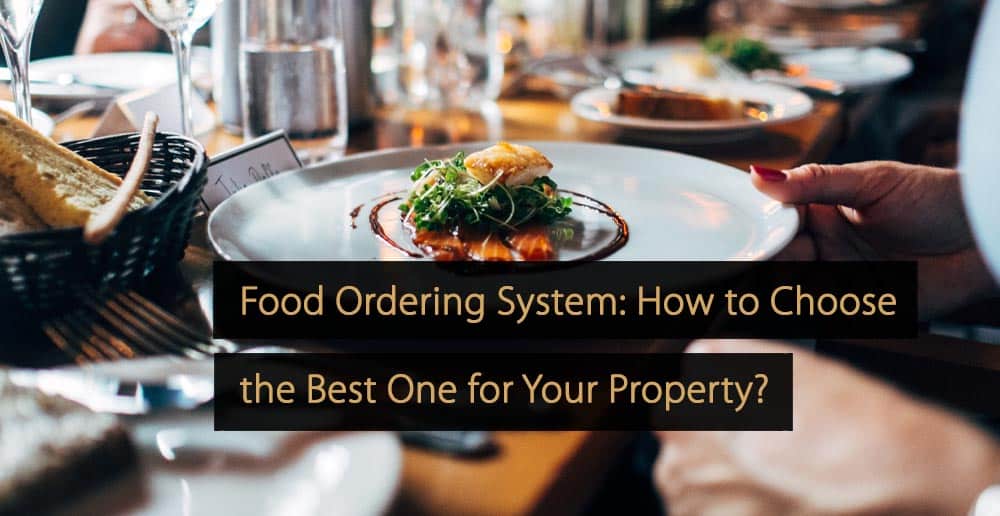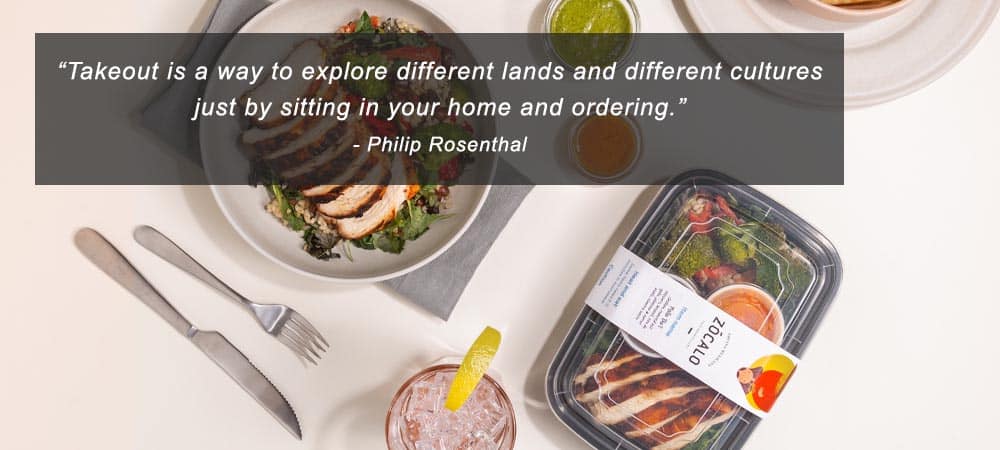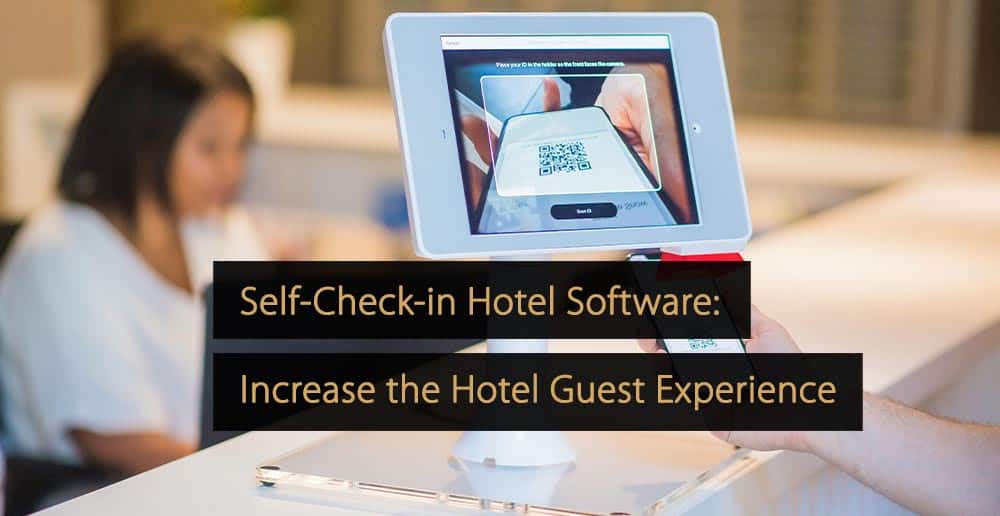A food ordering system is a system that allows a restaurant or similar business to accept, process, and manage orders for food from customers. In this article, you will be able to explore some common systems and understand the benefits of having a high-quality system in place for your business.
Table of Contents:
- What is the Restaurant Industry?
- What is a Food Ordering System?
- Why is a Food Ordering System Important?
- The Main Types of Food Ordering System
- Advantages of Using a Food Ordering System
- How to Choose Your Restaurant’s Food Ordering System
- The Popularity of Online Food Ordering
- Understanding Restaurant Management
- Investing in Restaurant Technology
- Deploying Restaurant Chatbots
- The Must-Have Online Food Ordering System Features
What is the Restaurant Industry?
Before examining how a food ordering system works, it is worth explaining precisely what the restaurant industry is and how it is defined. Quite simply, the restaurant industry provides food services in restaurants, cafes, bars, and even certain food stands.
That said, the most widely accepted definition of the restaurant industry draws a distinction between businesses that allow customers to buy and eat food on premises and those that do not. In other words, this definition has the word restaurant meaning a location where customers can consume food on-site.
Of course, restaurants can also provide other services, such as takeaway services and food delivery services. There is also usually a distinction between restaurant-type businesses that prepare food on the premises and non-restaurant businesses that sell food that has already been pre-prepared or pre-packaged.
In the “Restaurant Industry: Overview, Types, Examples and More” article, you will have access to a complete definition and an overview of the industry itself, including the different types of restaurants. You can also learn how restaurants differ from the wider food service industry and explore topics like Michelin Guides and technology trends.
What is a Food Ordering System?
A food ordering system is any system that allows those involved in restaurant management to accept food orders from customers, process the orders, manage orders, and receive payment. Typically, when people discuss a food ordering system in the modern industry, they are referring to a computerized system.
Although there are a number of different options here, a typical food ordering system will follow the same basic premise. Customers are able to view a menu, select the food they would like to order, place their order, pay, and then receive the food from the restaurant. The restaurant, meanwhile, sees the orders and knows what to prepare.
Ordering systems can be broadly divided into employee-operated systems and self-service solutions. With an employee-operated system, customers give their orders to an employee, and the employee is responsible for placing the order so that back-of-house teams know what to prepare. With a self-service option, customers place the order themselves, using self-service tools, such as an online ordering system, or a self-service kiosk.
Modern restaurants may use multiple food ordering systems, providing both self-service and employee-operated options while catering to on-site diners, takeaway orders, online delivery orders, and more.
Video: How Restaurant Ordering System works?
Why is a Food Ordering System Important?
A good food ordering system is important for restaurant employees and customers. It allows customers to place their orders and receive the food they want, while it also allows back-of-house staff, such as chefs, to understand what food they need to prepare. However, the value goes further than this.
For instance, a good, modern food ordering system can help restaurant staff to know which meals to prioritize, based on when they were ordered. Such a system can also bring order to a potentially chaotic environment, especially in restaurants that offer a combination of on-site dining, takeaways, and food deliveries.
The Main Types of Food Ordering System
In the sections below, you can learn much more about the main types of food ordering systems restaurants use.
Cash Register and Written Tickets
The most basic food ordering system utilizes a cash register and physical tickets, either hand-written by a restaurant employee or automatically printed from the cash register itself. This is a commonly used approach in restaurants with waiting staff, who write down orders and then hand the order over to the back-of-house team.
While this food ordering system is budget-friendly and easy to implement, there are some potential downsides, too. Handwritten tickets or relying on staff to remember orders can easily lead to mistakes. There is also a lack of direct integration between orders and restaurant performance tracking tools.
Your Restaurant Website and/or Mobile App
Another food ordering system option is your own restaurant’s website or mobile app. An online ordering system is a self-service solution, allowing customers to select the food they want and the time they want it for, too. This can also potentially be integrated into your wider company data, automatically updating sales information.
While this option is most commonly used to process takeaway and food delivery orders, it is increasingly finding its way into the on-site experience too, with customers sitting at the table, scanning a QR code, accessing the website or app, and placing their order directly from their table, in their own time.
Third-Party Websites and Apps
An alternative to using your own website or mobile app is to turn to third-party platforms and use their food ordering system to take orders. Some third-party apps and websites relevant within the restaurant industry include: Uber Eats, JustEat, Hungrrr, and GloriaFood.
Third-party websites and apps are an ideal option for restaurants that want to enable online ordering, but lack of the budget or technical skills to create a booking engine of their own. They also serve as a form of restaurant marketing and can expand reach. On the downside, restaurants typically have to pay commissions or listing fees.
Integrated Point of Sale (POS) System
A point of sale system, or POS system for short, is a system that can be used as a food ordering system within restaurants. It is closely related to the cash register concept, but a POS system has more advanced features and data integration, allowing transactions to be managed more fully.
For example, in addition to processing payments, the restaurant POS system could be set up to automatically send order details to the back-of-house team and to update your business’ sales data and inventory data automatically. Modern, cloud-based systems also allow multiple devices, such as tablets, to connect remotely to the POS system.
Advantages of Using a Food Ordering System
Next, exploring some of the advantages of using a high-quality food ordering system is important.
1. Simplifying the Ordering Process
The first and perhaps most obvious advantage of using a food ordering system is the ease of ordering food from your customers’ perspective. In the past, orders had to be given directly to a waiter or to someone on the end of a phone. Today, orders can be placed more flexibly on the customer’s time.
A food ordering system can be more user-friendly, with customers having the freedom to browse a menu at their leisure, add items, remove items, and then place an order. With takeaway restaurants, it becomes possible to make a food order while also carrying out other tasks, making the entire experience less disruptive.
Video: Why Invest in a Restaurant Online Ordering System?
2. Reducing Frustration Through Accuracy
Placing orders in-person or over the phone is prone to breakdowns in communication, such as restaurants forgetting an item, or customers failing to make clear precisely what they want. A major benefit of utilizing a high-quality food ordering system is circumventing many problems.
When using an ordering system, customers add the items they want and the quantity of each item. This information is then relayed to the restaurant. While mistakes can still happen, they are significantly less likely to occur, as all parties have access to the order after it is placed. This also means any issues that do arise can be resolved swiftly.
3. Offering Flexibility and Convenience
Another plus point linked to a food ordering system is the flexibility it can provide to customers. In particular, it allows customers to order food at any time, no matter where they are. So, as an example, they could order food while they are at work and request to have it delivered for a time after they get home.
Customers might even opt to place orders for another day in the future. Restaurants can maximize this flexibility by ensuring their food ordering system is equipped to cater to different ordering methods, including online orders, telephone orders, in-person orders, and perhaps even orders made via text message.
4. Generating More Food Orders
A well-designed food ordering system can increase the number of orders your restaurant generates. This can be achieved in a number of ways, such as using push notifications to alert customers to special deals, or simply by making the user experience convenient enough that ordering food becomes easier than the alternatives.
If you have an online food ordering system, you have the potential to reach customers who are not interested in dining out. Meanwhile, in your restaurant, a self-service food ordering system can allow customers to add items to their order mid-meal, dessert orders, or even extra items to take with them when they leave.
5. Widening Your Customer Base
Traditional restaurants face clear limitations regarding the number of customers they can reach. On any given day, they can only provide food for the people who can book a seat in the restaurant. However, a food ordering system can expand this reach by offering takeaways or food deliveries.
Meanwhile, using a third-party food ordering system, like JustEat or UberEats, you can reach customers who were previously unaware of your restaurant. In this sense, it can be seen as a kind of built-in restaurant advertising, especially if you attract positive reviews. When you deliver a meal, you can provide information about how customers can order directly in the future and save money, making this a mutually beneficial option for next time.
6. Facilitating Meaningful Connections
Some restaurants are reluctant to enter into the world of takeaways and food delivery services, because they feel like customers eating in their own homes are not getting the full experience. However, savvy restaurant owners increasingly use this to facilitate meaningful connections that can be capitalized upon later.
An online food ordering system allows your restaurant to reach people who may not be ready to visit your restaurant and provide them with a sample of what to expect. This can extend beyond the food, too. Why not include a personalized message with their order or think of other ways to generate loyalty that may result in a future visit?
7. Increasing Restaurant Revenue
A key focus for any business serving food for customers is restaurant management revenue, and a good food ordering system can help you reach your goals in this area. As previously stated, a food ordering system can expand your reach, allowing you to generate revenue from a wider base, but the benefits extend further still.
For instance, when a customer does not feel under pressure to provide their order to waiting staff, and they have time to really think about their choices, they are more likely to see additional items they may wish to order. In other words, a good ordering system can help you to extract maximum revenue from each customer.
8. Understanding Your Customers Better
One of the most underrated advantages of implementing a high-quality food ordering system is the data capture potential. With each order, you can generate valuable data about the meals people like, the meals people are not ordering, the deals that people are attracted by, or the deals that do not capture people’s imagination.
You can also identify key trends, like which foods are most popular at a particular time of the year, or how popular your vegetarian, vegan, gluten-free, or dairy-free options are. Within hotel restaurant management, you might be able to identify interesting trends associated with different types of hotel guests, such as business or leisure guests. Ultimately, this can help you understand your customers and make informed business decisions.
9. Enhancing Restaurant Scalability
The best food ordering system options can be scaled as your restaurant grows. This means that the features you use in your first year as a restaurant may vastly differ from those you use after five years once you have achieved success, increased your revenue, and expanded your customer base.
For example, early on, you may use a simple POS system, where on-site transactions are managed. Over time, this can connect with an online ordering system, third-party platforms, self-service kiosks, and more.
How to Choose Your Restaurant’s Food Ordering System
There are many food ordering systems on the market, and you need to make the right decision for your specific situation. In the sections below, you can learn more about choosing your ideal food ordering system.
1. Be Clear on Your Budget
The first step to acquiring a food ordering system is to be clear on your available budget. There is a big difference between the best food ordering system on the market and the best one for your specific needs. Calculate how much money you can spend on your ordering system, and do not drift away from this agreed budget. It may be the case that you can upgrade to a more complete ordering system at a later date.
2. Consider Integration
Another major consideration is the integration potential of your chosen food ordering system. How well can it integrate with the other technology you currently use in your restaurant? Will it open up the potential to use new technology? Does the ordering system allow you to consolidate your data collection? This is especially important if your restaurant combines on-site dining with takeaways and a food delivery service.
3. Think About Customer Data
Next, you need to give real thought to the issue of customer data. Which food ordering system will allow you to collect valuable customer data? How can this data be used to your benefit? Can this data be collected in a way that is consistent with your existing data collection? On top of this, you will also need to consider data protection and ensure your chosen system will allow you to keep customer data safe from cyber threats.
4. Explore the Key Features
All of the considerations mentioned so far are important, but it is absolutely essential that you take the necessary time to compare and contrast the major features of the different food ordering system options. Does the system allow for different payment options? Does it cover the major areas you need it to, like online orders and in-person orders? Can you provide customers with updates on their order status? Does it allow customers to leave feedback?
5. Contemplate Customization
Finally, you need to consider how customizable each food ordering system is and find the one that offers the level of customization you need. Can you add photographs of your meals to an online ordering system or self-service kiosk? Is adding your restaurant’s key branding elements, such as your logo, relatively simple? Not every restaurant needs an especially high level of customization, but you should try to find a future-proof option.
The Popularity of Online Food Ordering
The rise has hugely influenced the modern food ordering system in the popularity of online food ordering. This popularity results from a combination of factors, including busy modern lifestyles, the availability of on-demand services, improvements to digital technology, and reliance on smartphones.
Today, the online food ordering industry is worth billions of dollars, and customer expectations are constantly increasing. Modern customers expect not only to be able to order restaurant-quality food and have it delivered to their homes, but they also often expect elements of the experience they would receive in the restaurant.
Customer expectations have also largely been shaped by other industries. Ordering clothes and other items from online retailers is quick and easy, and many people have their shopping delivered. The previous acceptance that restaurant quality required a visit to a restaurant no longer exists in the same way.
Another factor influencing this modern trend is the availability of reviews within online ordering systems. This allows customers to find restaurants that have attracted positive reviews and order more confidently.
Many restaurants have also benefited from this shift. During the COVID-19 pandemic, many restaurants were kept afloat by customers willing to order food and have it delivered. Offering takeaways and food deliveries also allows restaurants to widen their potential customer base and increase revenue.
Understanding Restaurant Management
Finding the ideal food ordering system is just one of the many responsibilities associated with restaurant management. In addition, restaurant management involves overseeing day-to-day operations, managing restaurant strategy, tracking performance, identifying areas of weakness, managing employees, and much more.
In the “Restaurant Management: Everything You Need to Know” article, you will find a comprehensive breakdown of the most important information you need to know about the role of a restaurant manager.
Investing in Restaurant Technology
Restaurant technology is a major consideration in the modern industry. Aside from having the right food ordering system, you may need to consider digital displays, air purification technology, and QR codes. On top of this, a growing number of restaurants are experimenting with augmented and virtual reality technology, too.
In the “Latest Restaurant Technology Trends You Need to Know About” article, you can explore the most significant technology trends that are relevant to those working in the restaurant industry.
Deploying Restaurant Chatbots
Alongside your food ordering system and other technology, restaurant chatbots can help you deal with the most basic customer service queries. Chatbots are AI-powered and provide automated responses quickly, which is ideal when customers have a relatively straightforward question. They also do not require human intervention.
In the “Restaurant Chatbots: What Are They, Their Use and Benefits” article, you will have access to a full breakdown of how restaurant chatbots work, why they are so advantageous, and how they can be deployed.
The Must-Have Online Food Ordering System Features
As you will now know, there are many factors to consider when selecting your food ordering system, but the features are especially important. For a restaurant offering food delivery and collection services, it is absolutely crucial to invest in an online food ordering system that satisfies customers and makes life easier for staff.
In the “Online Food Ordering System: Must-Have Features When Choosing One” article, you can read a breakdown of the most important features to prioritize when comparing the different options on the market.
Food Ordering System FAQs
A food ordering system can take many forms and may need to facilitate conventional in-person, self-service, and online orders. Finding the right option for your restaurant can expand your customer base, improve operations, increase revenue, and boost the customer experience.
More Tips to Grow Your Business
Revfine.com is the leading knowledge platform for the hospitality and travel industry. Professionals use our insights, strategies, and actionable tips to get inspired, optimize revenue, innovate processes, and improve customer experience.Explore expert advice on management, marketing, revenue management, operations, software, and technology in our dedicated Hotel, Hospitality, and Travel & Tourism categories.
This article is written by:
Hi, I am Martijn Barten, founder of Revfine.com. With 20 years of experience in the hospitality industry, I specialize in optimizing revenue by combining revenue management with marketing strategies. I have successfully developed, implemented, and managed revenue management and marketing strategies for individual properties and multi-property portfolios.










Leave A Comment